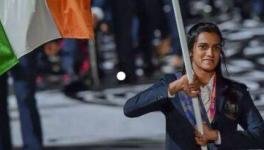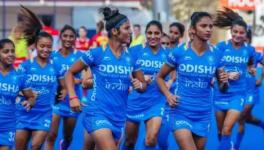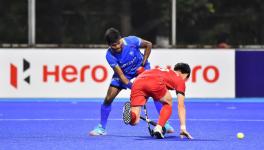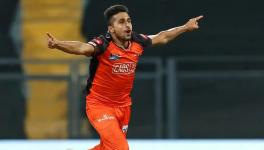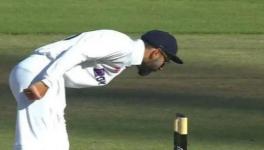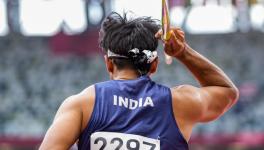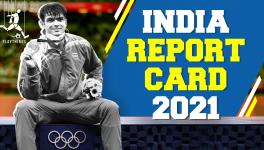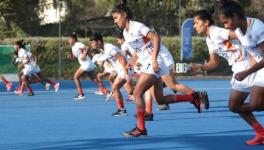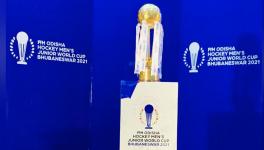FIH Hockey World Cup Preview: How Young India Will Do Without Sardar Singh
There is a strong sense of camaraderie in the Indian men’s hockey team for the FIH Men’s Hockey World Cup in Odisha, and Harendra Singh’s personal relationship with the group of young players has contributed hugely to it. (Pic: Hockey India)
Age is no guarantee of efficiency just as youth is no guarantee of revolution. Today is the first day of the FIH Hockey World Cup 2018. The quadrennial tournament is being held in Bhubaneswar, and as hosts a huge amount of pressure exists to make sure this is a memorable one.
Unsurprisingly, the age of the squad is a major talking point ahead of Indian hockey team’s first game. Most in focus is the midfield–a midfield that is home to India’s captain (Manpreet Singh) and vice-captain (Chinglensana Singh Kangujam) but being duly scrutinised for its lack of other experienced players. And in particular for its lack of Sardar Singh.
The importance of a well functioning midfield cannot be stressed enough. Like in football, I believe even in hockey it is the midfield that is the driving engine of a team. A well drilled midfield will always control the game. The best teams have the best players in midfield. And so, because a modern Indian great has retired, the focus on the replacements is stronger than ever.
Video | FIH Men's Hockey World Cup 2018: The What and What Nots of Game's Biggest Party
Sardar Singh is an icon of Indian hockey. His decade-long service to the Indian team should not and will not be forgotten in a hurry. With all due respect, though, it is time to move on. As a former player I can personally attest to the hurt that the words ‘move on’ inflict. On a personal level, players often don’t know what to move on to. Even if they do, the transition is never a seamless one. The more a player accomplishes the more adulation he receives and the harder it gets for anyone to move on.
When it comes to building a team, though, move on we must. The past is past. Those who have gone will not return. In my time watching hockey I have never seen a player more dynamic, more game changing or single-handedly more influential than Dhanraj Pillay in his prime. Dhanraj retired years ago. Just like there is no point of us asking for him to come back and spearhead the attack, there is no point of wondering what Sardar would have added to this midfield. What is pertinent, however, is what comes next.
While it is obvious that a mix of age and youth is the perfect concoction, I also believe that it is better to put out a young team at this level, if only to blood them in and perhaps keep an eye on the Olympics cycle. That said, this team does not lack any experience. Even the youngsters among them have already played around 25 matches at the senior level, and most were part of the Junior Hockey World Cup win in Lucknow. Additionally, they all have experience of having played in the Hockey India League (HIL) and understand very well how the sport is currently played.
Also Read | Golden Freedom: Legacy of Independent India’s First Hockey Olympic Gold in 1948
Although not a direct replacement (none of the kind exist in sport) Nilkanta Sharma is the one who will try to fill the Sardar-shaped void. Physically not as dominant, Nilkanta’s skill lies in his speed and dexterity on the turn. At the junior level he was renowned for finding open spaces without having to do a great deal with the ball. It was his quick pass, after drawing two players towards him, that opened up space for Simranjeet Singh’s goal in the Junior World Cup final against Belgium in 2016.
Through the game, when India seemed to be cruising, it was Nilkanta who was pulling the strings, controlling the pace of the game. Surrounded by more physically dominant athletes, he can only excel. His teammate from the junior days, Sumit will be another one making a World Cup debut. Their chemistry was a highlight of the Junior World Cup and, while the level of play is now much higher, the chemistry can only have gotten stronger.
Video | Chak De Gajoowas: The Hockey Playing Girls of Rajasthan
In interviews Harendra Singh, the coach, has stressed how he is keen to capitalise on the chemistry of his young players from their junior days and use that as a springboard for success. Having had access to a lot of players from a young age he has also developed a close relationship with them. There is a sense of camaraderie in the squad that has developed naturally, regardless of sporting ambition. That is how other nations have been building teams and it is how, finally, we are thinking too.
India are not the only team who will be walking in depleted because of retirements. Australia’s team is practically new-look. Mark Knowles, Chris Ciriello, Kieran Govers have all retired over the last eight months for a variety of reasons. The Aussie conveyor belt just keeps churning out world class talent, though, so don’t read too much into it. German legend Moritz Fuerste retired after the Rio Games. A shake up of the coaching staff, and an indifferent year, followed. They have dropped to 6th in the official rankings but will be itching to set the record straight and avenge their football team’s World Cup debacle. Belgium and Argentina are the two favourites in my book. They are the teams in form this year and, while they have always been dark horses, I think in a tournament format like the one this time they will thrive.
The group adjacent to ours is perhaps the most colourful of the tournament, and the one to definitely keep a look on. Germany and Netherlands are clear favourites but Pakistan have a great record against the duo. Additionally, Pakistan always seem to punch above their weight when it comes to the big tournaments. After a string of poor results in the recent past they too will play as a team with a point to prove and not much on the line. Malaysia, India’s Asian Games nemesis, round off Pool D.
Also Read | United on the Pitch: North and South Korea in Move to Build Combined Hockey Team
It is great to see Malaysia and Pakistan (especially Pakistan) here at the World Cup representing Asia. The more Asian countries the more the game will benefit, in my opinion. The crowds, the flavour, the spiritual home of the game is all here. Pakistan’s arrival greatly thrills me. Political issues and personal rivalries aside, theirs is a team I truly believe contributes massively to the legacy of international hockey. It is always a pleasure to watch India-Pakistan games and we can only hope we get one later in the tournament.
That is looking too far ahead, though. The format demands that teams keep their eye on the game at hand. Lose one game and you could put yourself in a tricky position for later in the tournament. For starters then, India need to focus on South Africa, a team ranked 13th in the world and with just one victory against. A buoyant, partisan Bhubaneswar crowd, the opening day high, and a surge of energy of playing at home should be enough motivation to start right. My wishes are with them.
(The author won over 250 India caps from 2001-2012. He played the 2002, 2006 and 2010 World Cups. He has also been a part of the national team’s coaching staff.)
Get the latest reports & analysis with people's perspective on Protests, movements & deep analytical videos, discussions of the current affairs in your Telegram app. Subscribe to NewsClick's Telegram channel & get Real-Time updates on stories, as they get published on our website.









